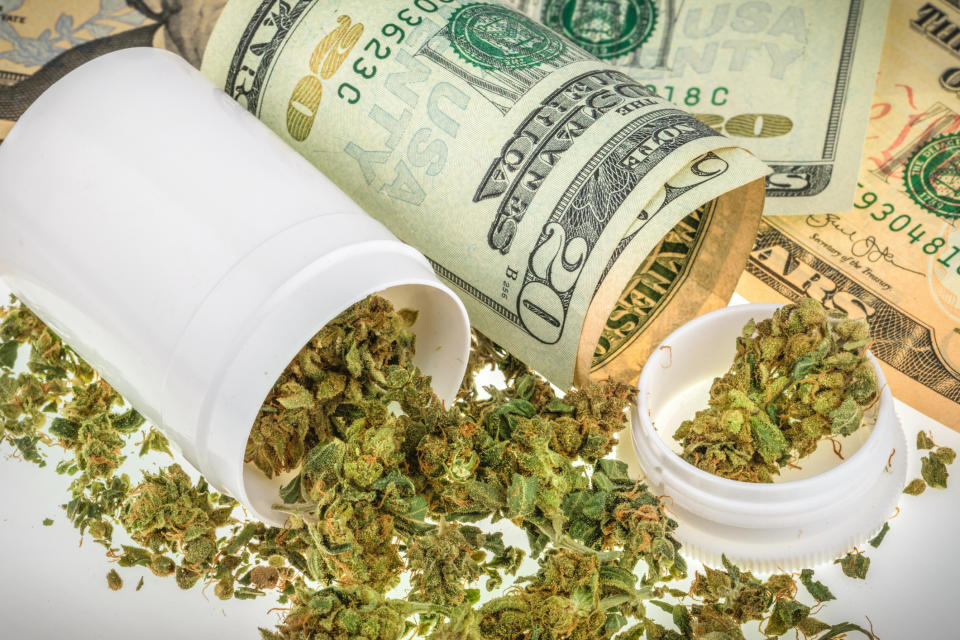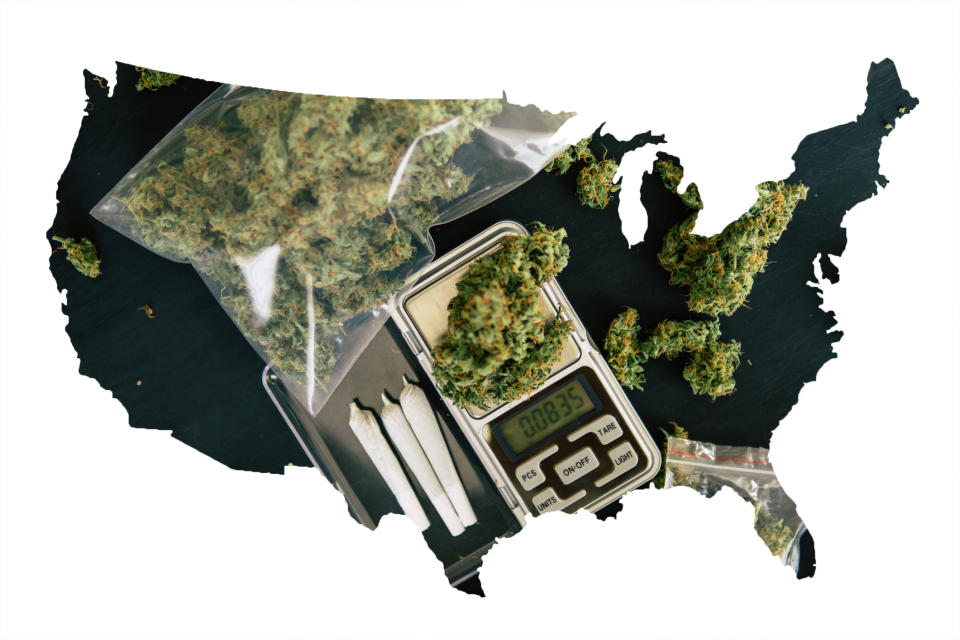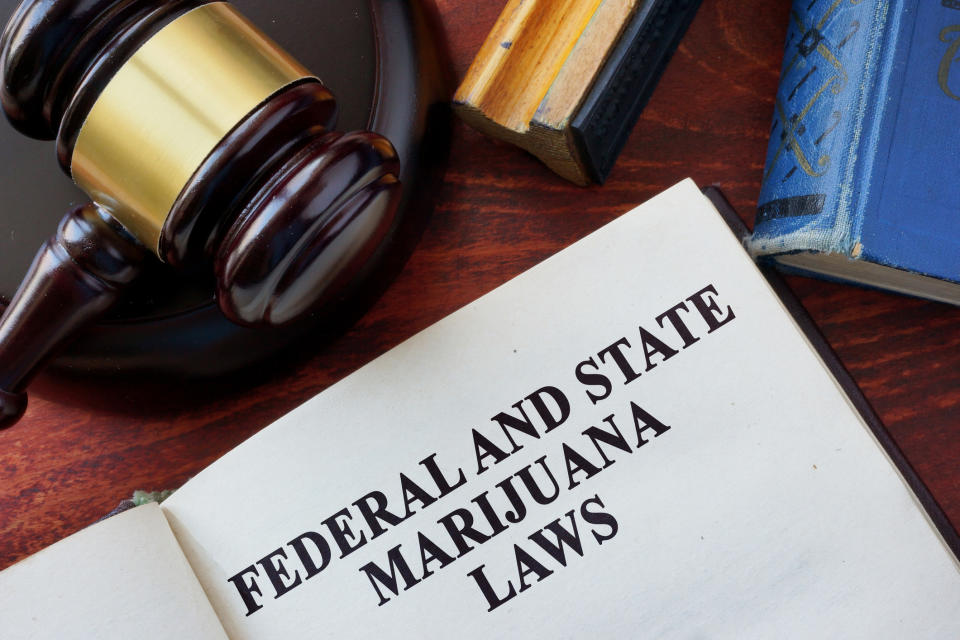If Legal Today, Here's How Much the U.S. Pot Market Would Generate in Sales
Although a majority of the global marijuana industry is still dominated by the black market, there's little denying anymore that legal cannabis is becoming a valid and legitimate big-business model.
Last year, Canada became the first industrialized country in the world to give recreational cannabis the green light, with Mexico expected to become third country overall (along with Uruguay) to have legalized adult-use weed last this year. There are also more than 40 countries globally that allow medical cannabis to be prescribed by a physician. As additional countries wave the green flag, the market potential for legal weed continues to grow.

Image source: Getty Images.
How big could the global pot market grow?
The big question has always been, "Just how large can the legal pot industry become?" And it's a question that has multiple answers, depending on your preferred source.
Somewhat recently, analysts at three Wall Street investment firms -- Jefferies, Bank of America, and Cowen Group -- offered their takes on the global pot industry. Jefferies forecast global sales of $50 billion by 2029, with a peak potential for $130 billion in annual revenue (with no timetable given for this peak estimate). Bank of America's Christopher Carey forecast an even more aggressive top-line estimate of up to $166 billion in annual sales, with cannabis disrupting other industries that total $2.6 trillion in annual sales. Lastly, Cowen Group, the industry's biggest cheerleader, is looking for $75 billion in worldwide revenue by 2030.
Regardless of the estimate you prefer, the story is the same: The legal marijuana industry is growing at a rapid clip, and it's here to stay.
Here's how much the U.S. cannabis market would be worth, if legal, today
But perhaps the biggest head-scratcher of the cannabis growth story is that it remains wholly illicit at the federal level in the United States. Despite 66% of Americans favoring a broad-based legalization of marijuana, and 33 states giving the OK to medical marijuana in some capacity, it's still a Schedule I substance at the federal level. Yet, if it were legal, the U.S. would dwarf all other markets in terms of annual revenue.

Image source: Getty Images.
This past week, analysts at investment bank Barclays issued a report that estimated what U.S. marijuana sales would be right now (and in a decade) if cannabis were legal. According to Barclays analysis, which factored in results from the 2017 National Survey on Drug Use and Health that showed an estimated 26 million people over age 12 were cannabis users, the U.S. pot market today would be worth $28 billion in annual sales (on a pre-tax basis) today, with this figure climbing to $41 billion by 2028.
For added context, B of A's Christopher Carey assumed that the U.S. would hold a 34% share of his firm's $166 billion pie-in-the-sky estimate, suggesting that Barclays and B of A are close to being on the same page with regard to America's "pot-tential."
In other words, the U.S. market could run circles around Canada, Mexico, and any other market that's tinkering with the idea of adult-use legalization.
Consolidation is picking up at an extraordinary pace, but investors should remain cautious
Considering that cannabis favorability continues to improve in the U.S., and marijuana banking reform bills might finally receive the time of day in Congress, it's no surprise that consolidation is really beginning to take hold among vertically integrated dispensary operators. Since October 2018, there have been six major U.S. dispensary acquisitions announced, one of which is contingent on the U.S. legalizing marijuana.
For example, just as Aurora Cannabis is aiming to take the Canadian marijuana production landscape by storm via acquisitions, Harvest Health & Recreation (NASDAQOTH: HRVSF) is hoping to do the exact same thing with the vertically integrated dispensary model in the United States. Despite having just 10 open retail locations in four states at the moment, Harvest Health's recently announced $850 million all-stock buyout of privately held Verano Holdings, coupled with its smaller announced purchase of CannaPharmacy, will increase its aggregate number of licenses to 213. Of these 213 licenses, 130 are for retail locations, with the remainder covering grow farms and processing sites in 17 states. Harvest Health appears to be gobbling up every vertically integrated dispensary business in sight and attempting to reduce the time it takes to broaden its physical presence.

Image source: Getty Images.
While there's little denying the opportunity at hand, I'd caution investors that legalization is no given in the United States. Even with growing momentum at the congressional level, there are key hurdles that would need to be overcome.
For instance, Republicans have historically had a more negative view on marijuana than either Democrats or Independents. Although the GOP's stance has certainly softened over the years, their control over the Senate and Oval Office gives cannabis reform minimal chance of passing before 2021.
Furthermore, marijuana companies are exposed to Section 280E of the U.S. tax code as long as pot remains illicit. This tax code disallows businesses that sell a federally illicit substance from taking normal corporate income tax deductions, save for costs of goods sold. Or, in layman's terms, it exposes profitable pot companies to really high federal tax rates. Legalizing weed would remove cannabis companies from exposure to 280E and cost the federal government billions of dollars in tax revenue over the next decade.
So, yes, the U.S. would easily be the biggest marijuana market in the world, if legalized. But there are federal hurdles that could prevent this from happening for a long time to come.
More From The Motley Fool
Sean Williams owns shares of Bank of America. The Motley Fool has no position in any of the stocks mentioned. The Motley Fool has a disclosure policy.

 Yahoo Finance
Yahoo Finance 